- Home
- TV History
- Network Studios History
- Cameras
- Archives
- Viewseum
- About / Comments
Skip to content








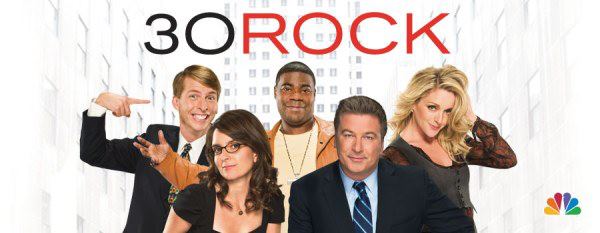







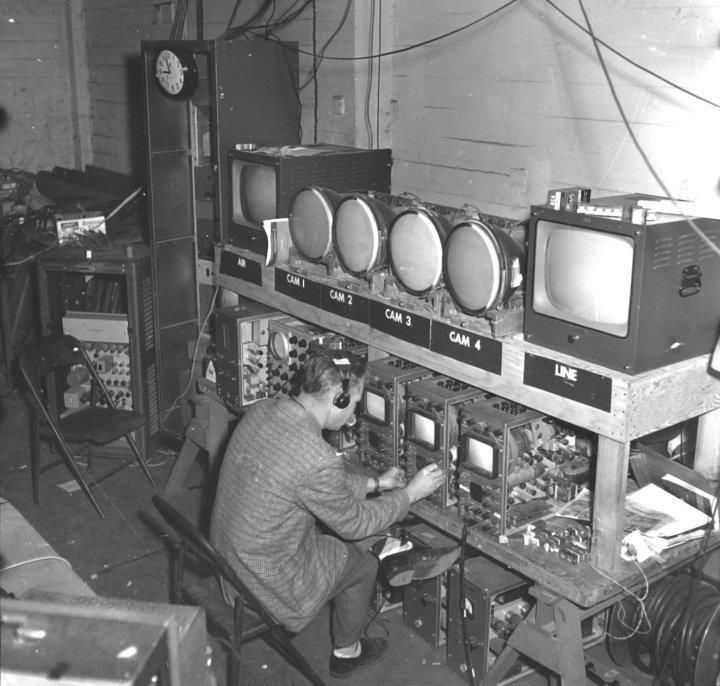

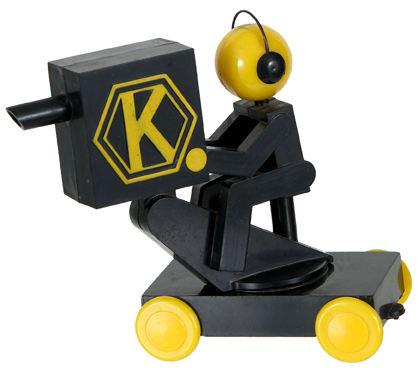

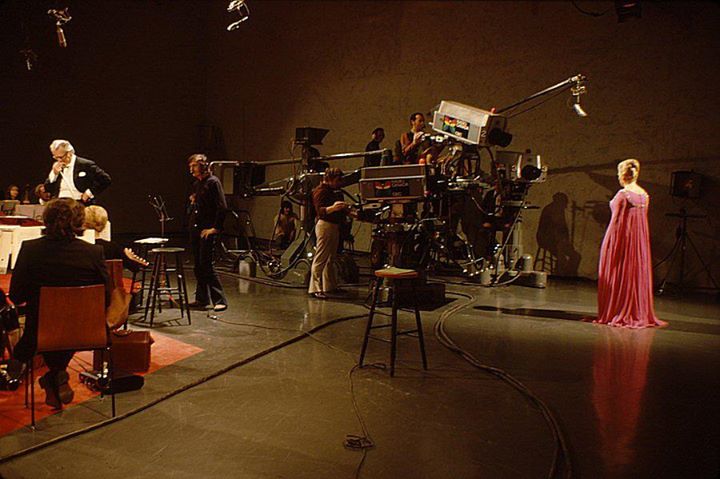



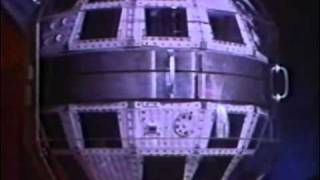



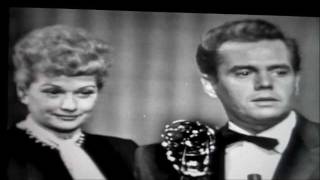

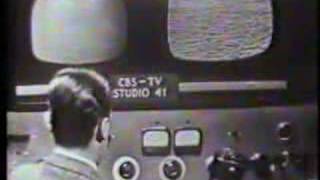





Posts in Category: TV History
Page 120 of 136
« Previous
1
2
3
4
5
6
7
8
9
10
11
12
13
14
15
16
17
18
19
20
21
22
23
24
25
26
27
28
29
30
31
32
33
34
35
36
37
38
39
40
41
42
43
44
45
46
47
48
49
50
51
52
53
54
55
56
57
58
59
60
61
62
63
64
65
66
67
68
69
70
71
72
73
74
75
76
77
78
79
80
81
82
83
84
85
86
87
88
89
90
91
92
93
94
95
96
97
98
99
100
101
102
103
104
105
106
107
108
109
110
111
112
113
114
115
116
117
118
119
120
121
122
123
124
125
126
127
128
129
130
131
132
133
134
135
136
Next » The Very Last RCA Cameras Ever Made
On February 5, 2013
- TV History
The Very Last RCA Cameras Ever Made
Both of these cameras are RCA TKP 47s. The blue version was introduced at the NAB in 1982…the grey version is the final configuration of the TKP 47 and appeared in 1983. Production stopped in 1984. In 81, the last studio cameras had been made in Camden when the TK47 and TK761 lines were halted.
In 1984, RCA Broadcast Systems Division ceased operations and moved from Camden, to the site of the RCA antenna engineering facility in Gibbsboro, New Jersey. In the years that followed, the broadcast product lines developed in Camden were terminated or sold to Thomson. Most of the buildings demolished, except for a few of the original RCA Victor buildings that had been declared national historical buildings. For several years, RCA spinoff L-3 Communications Systems East was headquartered in the building, but has since moved to an adjacent building built by the city for them. The remaining RCA buildings now houses shops and luxury loft apartments.
Last Of The RCA Studio Cameras: The TK47
On February 5, 2013
- TV History
Last Of The RCA Studio Cameras: The TK47
From 1979 till 1981, RCA made 238 TK47s. In ’79, 36 were built, 118 built in ’80 and in ’81, the final run of 84 cameras were built.
It would be interesting to know who the last TK47s were sold to. This photo is at WBNS in Columbus, Ohio.
The RCA Orthicon Tube
On February 4, 2013
- TV History
The RCA Orthicon Tube
Harley Ambrose Iams and Albert Rose of RCA developed the tube in 1938. Although it was a simpler design than the Iconoscope, building this tube was much more difficult. This 4 Inch RCA Orthicon tube was 18 inches long.
The Sue Bennett Show, WBZ Boston
On February 1, 2013
- TV History
The Sue Bennett Show, WBZ Boston
Susan Bennett starred on the NBC quiz and variety show, Kay Kyser’s College of Musical Knowledge in 1949-50, on the DuMont show Teen Time Tunes in 1949, and was featured on the popular Your Hit Parade in 1951-52. She also appeared as a regular guest on other network shows.
Bennett’s recordings with the Kay Kyser Orchestra include “Sam, The Old Accordion Man,” and “Tootsie, Darlin’, Angel, Honey, Baby.”
Following her network career, Bennett became a Boston television personality and in 1954 and 1955, starred on The Sue Bennett Show, a weekly program on Boston’s WBZ-TV.
30 Rock: FINAL EPISODES AIR TONIGHT! Great send off article
On January 31, 2013
- TV History
30 Rock: FINAL EPISODES AIR TONIGHT!
Great send off article in the Washington Post.
http://www.washingtonpost.com/entertainment/tv/bracing-for-30-rocks-sharp-witted-farewell/2013/01/30/a5d7aa1a-6b1e-11e2-ada3-d86a4806d5ee_story.html


WBBM, Chicago: 1981 Behind The Scenes
On January 30, 2013
- TV History
WBBM, Chicago: 1981 Behind The Scenes
This is a very good and thorough look at what goes into a major market news cast in this era…lots of gear is covered here and it all starts in the studio with Bill Curtis being shot with Thomson cameras. Enjoy!
Double Play Photo!
On January 30, 2013
- TV History
Double Play Photo!
Thanks to Normand Latour, we not only have a photo of his father, Raymond, operating this Marconi Mark II, we now have the best shot I have ever seen of the rare Vinten Pathfinder dolly. An electric version of the Pathfinder came later, but you don’t see many of these manually operated models. It’s almost like the Houston Fearless Panoram dolly, but this had a foot rest and a stay level seat that is a much better arrangement. Raymond Latour was the first cameraman hired to work in Studio 51.
Sin Of Sins! The Whole Story!
On January 29, 2013
- TV History
Sin Of Sins! The Whole Story!
For NBC to own any camera other than an RCA…well… that was just unthinkable! How could the child of it’s own parent company do such a thing? Simply put, it was out of necessity.
Early in their history, RCA had become quite successful with their victrolas, radios, tvs and networks and had become a large, cumbersome corporation. Although pioneers, Ampex ‘scooped’ them in the 50s with video tape and in the mid 60s, Norelco was ready to scoop them again in cameras.
RCA had stopped making TK41s in 1964 in preparation of the TK42, but snag after snag gummed up the works. NBC sports executives wanted new cameras for their expanding coverage needs, but the TK42 was not looking good… figuratively and literally. Unknown to most at RCA, some engineers like their Lou Bazin were already working on a TK44 and had found Plumbicon tubes and optics were available to them at Amperex, the Phillips tube maker in the US. But, that was still to long to wait.
The order came down from above to find new cameras and the job fell to Fred Hemelfarb. Fred had come to NBC from RCA with the first TK40s and was NBC’s camera guru and the go-between that made dozens of improvements on the RCA color lines of telecine, cameras and videotape.
Norelco sent 2 cameras for Fred to test and inspect. His was the job of customizing the Norelco cameras to NBC specs. With this done, Norelco was given the order for 35 cameras. The first 6 arrived just in time for the 1967 World Series and were put to the test. Norelco and NBC executives watched the first game in a private trailer on two RCA home receivers. After the game, Fred came up from the truck and everyone was quite happy…especially with the left field shots. That’s when Fred told them there were actually 7 cameras on the game. The left field camera was an RCA TK41. Further modifications were made. Now you know.
“Queen For A Day”, Fancy Remote Setup In Houston
On January 29, 2013
- TV History
Fancy Remote Setup Isn’t It?
In the late 50s, ‘Queen For A Day’ would occasionally take the show on the road. When they did, the local NBC stations supplied the equipment and crews. This photo is from KPRC in Houston where a week of shows came from City Auditorium.
The Kraft Music Hall: 1933-1971
On January 27, 2013
- TV History
The Kraft Music Hall: 1933-1971
Surprised at the long run? Me too! I never realized the show started on NBC radio. The Kraft Program debuted June 26, 1933 as a musical-variety program featuring orchestra leader Paul Whiteman. During its first year the show went through a series of name changes, including Kraft Musical Revue, until it finally settled on Kraft Music Hall in 1934. Paul Whiteman remained the host until December 6, 1935. Ford Bond was the announcer.
Bing Crosby took over as master of ceremonies January 2, 1936 and hosted until May 9, 1946. For the advertising managers at Kraft, it was imperative that advertising and entertainment be kept separate. For this reason, Kraft insisted that an announcer, not cast members, read its commercials. Ed Hurlihy was the TV announcer.
After Crosby Kraft Music Hall went through a handful of short-lived hosts. Edward Everett Horton, Eddie Foy and Frank Morgan all hosted from 1945 through 1947. Nelson Eddy took over the summer spots in 1947 and with costar Dorothy Kirsten in 1948 and 1949. Al Jolson dotted the Kraft Music Hall landscape, first as an occasional guest from 1933 to 1935, then later as the star and host from 1947 to 1949. In 1947, Kraft started in television but went with dramas in the Kraft Television Theater.
The Kraft Music Hall started in television in 1958, replacing the dramatic anthology series Kraft Television Theater. Milton Berle hosted during the 1958 season. Beginning with the fall 1959 season, singer Perry Como became the host, and continued until 1967 (as a monthly series from 1963 through ’67). During the summer seasons, the show continued with new episodes, with a variety of guest hosts replacing Berle/Como. This rotation of guest hosts became a permanent feature when Como left the series in the winter of 1967 (with the Music Hall returning as a weekly series that fall), and continued until the series finally ended in 1971.
During its final years, Friar’s Club “Roasts” were occasionally broadcast on this series in place of the usual musically themed episodes. Later, these Roasts appeared as a separate series hosted by Dean Martin.
“Thank God For Canada”! RCA Sales Chant….
On January 22, 2013
- TV History
“Thank God For Canada”! RCA Sales
From 1965 – 69, RCA sold a total of 376 TK42s. From 1967-70 they sold 93 TK43s. Except for a few dozen sold to the CBC and Radio Canada, all other sales were to local stations. It was the only RCA camera the US networks never bought. The next big camera sales to US networks were the TK44 and the TK47 studio cameras and the TK76 ENG camera.
Behind The Scenes: The NFL Today, 1975
On January 21, 2013
- TV History, Viewseum
Behind The Scenes: The NFL Today, 1975
I had planned to do this story today anyway, but over the weekend, Dave Miller posted a great video to go with it. In the clip, we go to CBS Studio 45 at the Broadcast Center, BUT, don’t skip over the story below.
CBS veteran Gady Reinhold and I have had a few conversations about this live show and how complex it is to produce. With sometimes as many as 4 early games and 4 late games, the trick is to line up the half time breaks so they can all go back to NY at the around the same time. Remember, each game is being fed to different regions and time zones on separate channels.
The least complex way to get at least 2 games into the live half time show was to have the game announcers pad for time with a review of the first half on their end while waiting for another game or two to break if they were only a couple of minutes ahead.
Just like in the video attached here, each halftime show has a built in, prerecorded feature in the second part. If the game breaks for halftime too early, Studio 45 can feed the feature first and that game can join the live studio session after the feature, or, get a delayed tape feed of the live segment.
The live portion would include comments on all the games being covered, was being recorded on several machines as they went, starting with the first 2 games to break. They would record the live A block till the fist commercial break on 2 machines, rewind and be ready for play back when the other games joined. The live B and C blocks would be done the same way on other machines. The D and E blocks were the prerecorded features.
Once the early games were over, there were the late games to do. Lather, rinse, repeat. Needless to say, this took a lot of instant communication and some very talented people to pull off.


July 10, 1962: Telstar, The First Communications Satellite
On January 19, 2013
- TV History
July 10, 1962: Telstar, The First Communications Satellite
What now seems common, was anything but, when Telstar went into orbit. Launched by NASA aboard a Delta rocket from Cape Canaveral on July 10, 1962, Telstar 1 was the first privately-sponsored space launch. A medium-altitude satellite, Telstar was placed in an elliptical orbit completed once every 2 hours and 37 minutes, inclined at an angle of approximately 45 degrees to the equator.This is in contrast to most of today’s communications satellites, which are placed in circular geostationary orbits.
Due to its non-geosynchronous orbit, Telstar’s availability for transatlantic signals was limited to the 20 minutes in each 2.5 hour orbit when the satellite passed over the Atlantic Ocean. Ground antennas had to track the satellite with a pointing error of less than 0.06 degrees as it moved across the sky at up to 1.5 degrees per second.
Since the transmitting and receiving radio systems on board Telstar were not powerful, the ground antennas had to be huge. Bell Laboratories built the electrical portions of the system that steered the antennas. The aperture of the antennas was 3,600 square feet. The antennas were 177 feet (54 m) long and weighed 380 tons (340,000 kg). The antennas were housed in radomes the size of a 14-story office building.
The top link is to a short version video, the bottom to a very detailed longer version from the AT&T Archives. Enjoy!
http://www.youtube.com/watch?v=sRHpl2gZOo0
http://www.youtube.com/watch?v=uKH-GijnAGk
To see more from the AT&T Archives, visit http://techhchannel.att.com/archives The story of how the Bell System, in cooperation with NASA, developed the Tels…
Hate ‘Happy Talk’ News? Me Too! Blame William Fyffe!
On January 19, 2013
- TV History
Hate ‘Happy Talk’ News? Me Too! Blame William Fyffe!
William C. Fyffe, was the television news executive who pioneered the medium’s controversial “happy news” trend more than three decades ago.
From the Los Angeles Times: “The longtime president and general manager of WABC-TV in New York City, Fyffe developed his happy-talk format in the Midwest, particularly as station manager at WLS-TV in Chicago.
” ‘Happy news’ is a misnomer,” Fyffe told The Times in 1972 when he was news director at KABC and facing nationwide criticism. “It implies that TV news is all fun and games and goofing off. That’s not what we’re doing. We don’t mess with the news; the happy talk is between people, and that doesn’t occur on serious news.”
“The anchorman,” he said, “has become a rather computerized sort of guy. I, for one, haven’t been too sure anything was happening between his eye and his mouth. The way we do it, a real person has to be there. He has to be a solid journalist, not just a pretty face.”
He said the formula was meant to combine a “friendly, humanizing” attitude toward news, “more candor and directness” and features about good works, as well as reports on crime and disasters.
“Here we make an effort to find good news, yes,” he said in 1972, when the concept was still new. “Not to the exclusion of conflict and tragedy. But if we can’t also find the joy, the celebration of life that goes on every day, we’re liars. I like to leave the audience feeling that we’ve made intelligent choices, given them the stories they need information about, but also sure that the world is still going to be here tomorrow.”
Other networks and local newscasts quickly copied Fyffe’s formula, but often distorted and abused it to the scorn of critics and sophisticated viewers.
Not so with Fyffe’s work. Maury Green, a Times television columnist and television veteran himself, said in 1972 that anchors elsewhere seemed to be laughing it up far more than Fyffe’s crew.
As general manager, Fyffe was constantly under ratings pressure in the highly competitive New York market. In 1972, he hired Tom Snyder, then coming off eight years of NBC’s “Tomorrow” show, as WABC-TV anchor. But Fyffe had a prickly relationship with Snyder, and suspended him for a week without pay in 1983 for making an obscene gesture to a stagehand. Snyder left when his contract expired and returned to Los Angeles.
Fyffe also made unpopular decisions, irking other on-air talent. When he moved colorful New York columnist Jimmy Breslin’s “People” to 1 a.m. Fridays and 1:30 a.m. Mondays–too late, Breslin complained, for even late-night New Yorkers to be awake and watching–Breslin lashed back in his New York Daily News column.
“Bill Fyffe,” Breslin suggested, should “do the honorable thing and jump in front of a bus.”
Fyffe that year also dropped the Los Angeles-based show “Entertainment Tonight” in favor of a revived “Hollywood Squares” to get higher ratings. And, again in a quest for better ratings in New York, he advanced the time slot of ABC network news to pit the popular game show “Jeopardy” against Tom Brokaw at NBC and Dan Rather at CBS.


February 11, 1954: 6th Annual Emmy Awards Show
On January 17, 2013
- TV History
February 11, 1954: 6th Annual Emmy Awards Show
Live from the Hollywood Palladium, Ed Sullivan hosted the ceremonies broadcast by KHJ TV, but only to the local audience. Starting in March 7, 1955, NBC took over, and the awards show has been seen nation wide ever since. In ’55, Steve Allen and Dave Garroway hosted via split screen from LA and NYC. Notice about a minute in how the KHJ cameras, with very long lenses, artfully avoid each other during Vivian Vance’s walk to the platform.
http://www.youtube.com/watch?v=dfg8Sw_0Lw4
6th Annual Emmys. Vivian Vance wins as well as best situation comedy for I Love Lucy.


September 4, 1951: Coast To Coast Television Now Possible
On January 17, 2013
- TV History
1951: Coast To Coast Television Now Possible
On September 4, 1951,President Harry S. Truman’s opening speech before a conference in San Francisco is broadcast across the nation, marking the first time a television program was broadcast from coast to coast. The broadcast, via then-state-of-the-art microwave technology, was picked up by 87 stations in 47 cities, according to CBS.
On November 18, 1951, Edward R. Murrow on See It Now presents the first live coast-to-coast commercial television broadcast in the US, showing a split screen view of the New York Harbor and the Bay Bridge in San Francisco. That video from Studio 41 at the CBS Grand Central location is below…Don Hewitt is directing.
This east – west link was made possible because of AT&T’s new microwave radio-relay skyway, the first facilities to transmit telephone, radio and television across the United States by radio rather than wire or cable.
The new route, at the time the longest microwave system in the world, relayed calls along a chain of 107 microwave towers, spaced about 30 miles apart. AT&T spent about three years building it at a cost of $40 million.
On Sept. 4, the largest single television audience to date – estimated at more than 30 million people – saw and heard President Harry Truman open the Japanese Peace Treaty Conference in San Francisco. The nation’s first coast-to-coast telecast, this broadcast was made possible when AT&T met a U.S. State Department request to advance the TV opening of the new system by a month.
The historic program went off without a hitch. The New York Times reported that “the image reproduced on screens in the New York area, nearly 3,000 miles from the scene, had excellent clarity and compared favorably with programs of local origin. The contrast was of first-rate quality and there was no distortion.”
http://www.youtube.com/watch?v=I7fu5M5OFe8
A clip from the first program of the 50’s CBS series See It Now with Edward . Morrow.
NBC Burbank, 1959: Video Tape Bay 3
On January 16, 2013
- TV History
NBC Burbank, 1959: Video Tape Bay 3
This is an early look at the video tape department in Burbank. There were three bays of RCA TRT 1 Cs with 4 machines in each bay. Machines 11 and 12 are seen on the back wall. Twelve machines were needed not only to record shows produced there, but to record and playback network feeds for time delay broadcasts. Photo from RCA Broadcast News, March, 1959.


Marconi Mark IIs Cover Empire Games, Vancouver
On January 15, 2013
- TV History
CBUT Marconi Mark IIs Cover Empire Games, Vancouver
The Mark II cameras that were just found were a key element in covering this, and all events of the 1954 Empire Games.
http://www.youtube.com/watch?v=jP_NzZP_LK0
On 6th May 1954, Roger Bannister ran the first sub-4-minute mile at Iffley Road, Oxford. He held his world record for just six weeks before his great rival, …
Page 120 of 136
« Previous
1
2
3
4
5
6
7
8
9
10
11
12
13
14
15
16
17
18
19
20
21
22
23
24
25
26
27
28
29
30
31
32
33
34
35
36
37
38
39
40
41
42
43
44
45
46
47
48
49
50
51
52
53
54
55
56
57
58
59
60
61
62
63
64
65
66
67
68
69
70
71
72
73
74
75
76
77
78
79
80
81
82
83
84
85
86
87
88
89
90
91
92
93
94
95
96
97
98
99
100
101
102
103
104
105
106
107
108
109
110
111
112
113
114
115
116
117
118
119
120
121
122
123
124
125
126
127
128
129
130
131
132
133
134
135
136
Next »